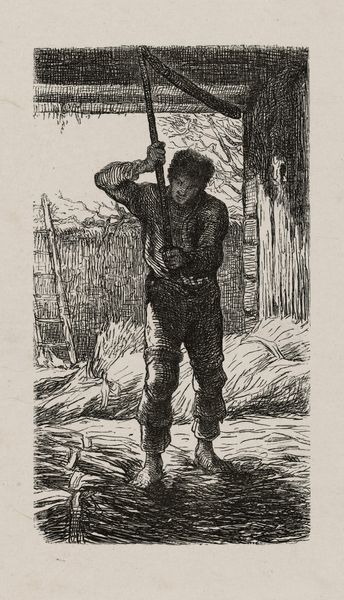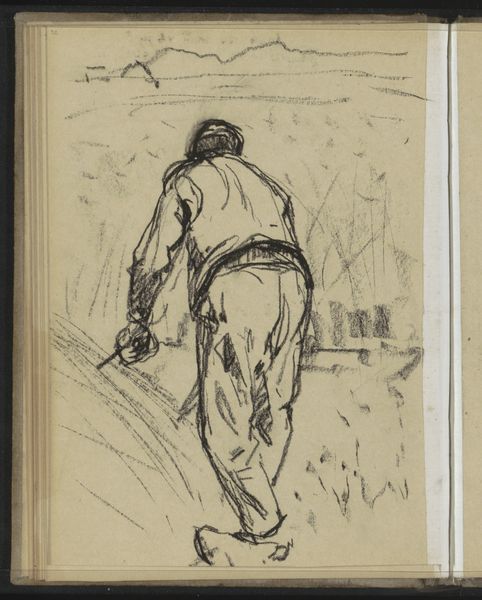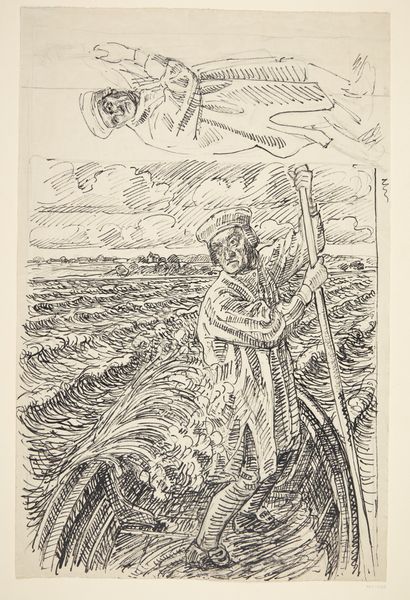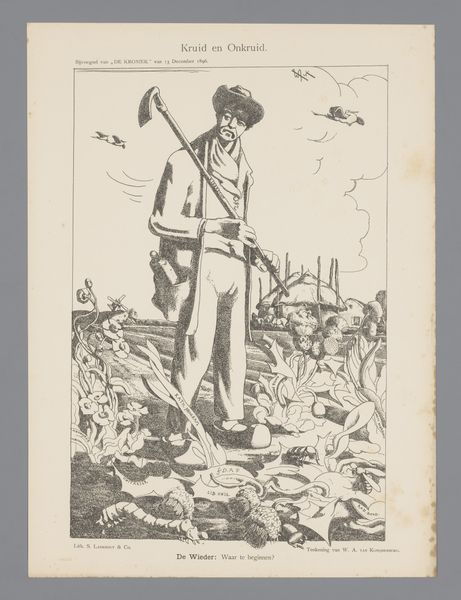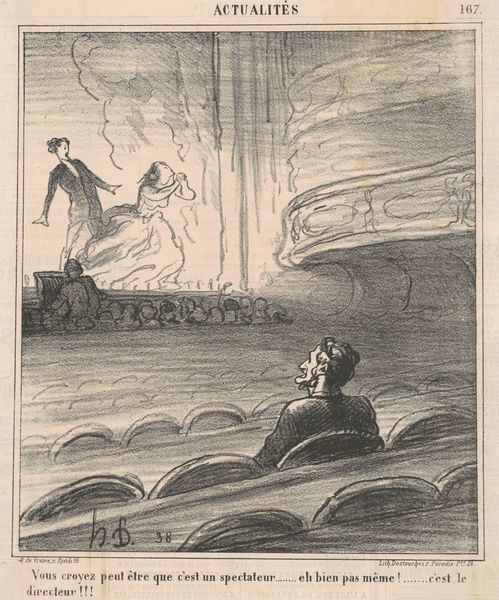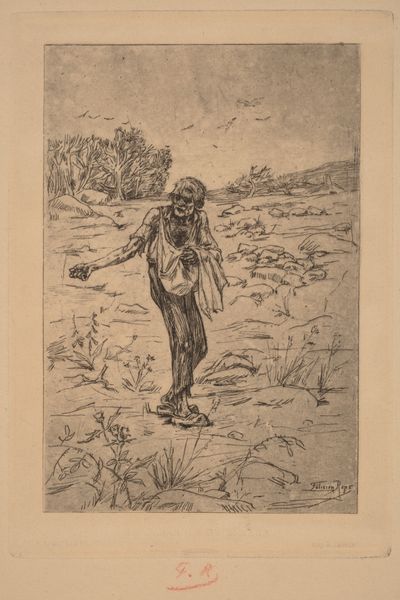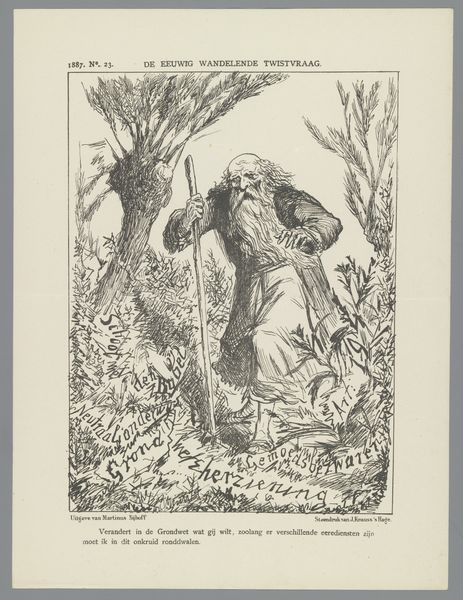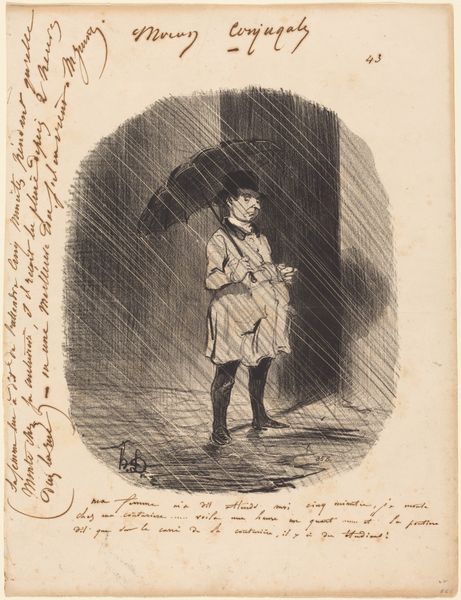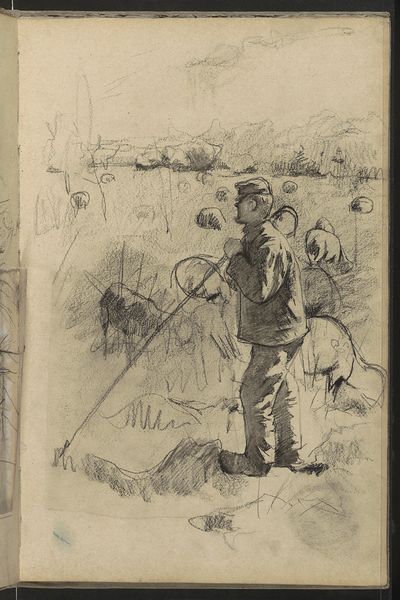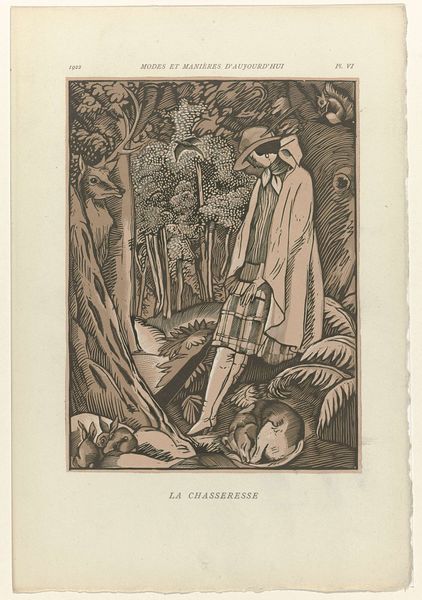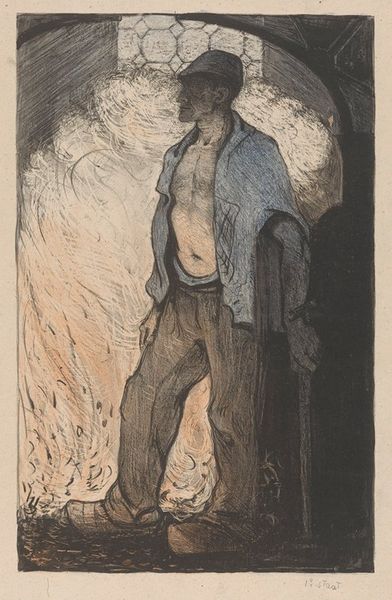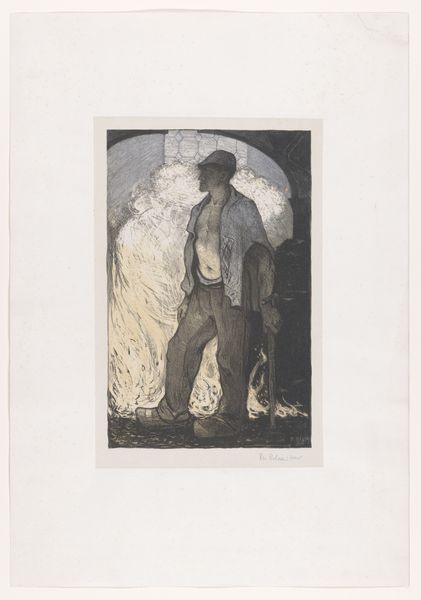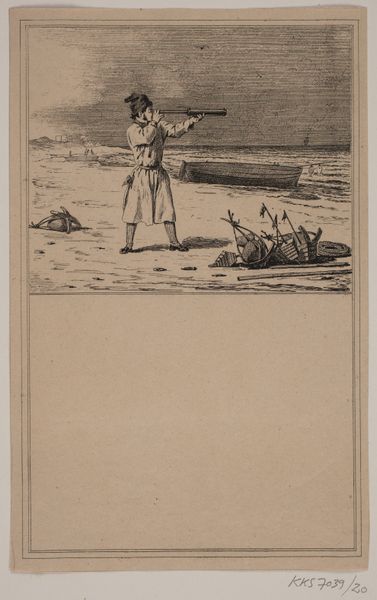
Layout of Panas Mirnyi's book "Chipka". The ninth turn 1969
0:00
0:00
hryhoriihavrylenko
Private Collection
drawing, ink, pen
#
drawing
#
ink drawing
#
pen drawing
#
pen illustration
#
pen sketch
#
landscape
#
figuration
#
personal sketchbook
#
ink
#
ink drawing experimentation
#
pen-ink sketch
#
pen work
#
sketchbook drawing
#
pen
#
sketchbook art
#
realism
Copyright: Hryhorii Havrylenko,Fair Use
Curator: Here we have Hryhorii Havrylenko's "Layout of Panas Mirnyi's book 'Chipka'. The ninth turn," created in 1969. It appears to be executed in ink, with both pen and drawing techniques employed. Curator: It feels incredibly somber. The harsh lines create a stormy, almost oppressive atmosphere. There’s a real sense of isolation emanating from the figure in the foreground. Curator: Indeed. Looking at the hatching and cross-hatching, one can see a deliberate effort to build up tonal values. Consider the paper itself; the tooth probably aided the ink's adherence. And what about the mass production of Panas Mirnyi's book for whom this layout was commissioned, reflecting larger societal values. Curator: The lone figure—presumably the protagonist, Chipka—positioned against this vast, unforgiving landscape speaks volumes about the peasant experience in that era. Is it romanticism, is it exploitation? The artist uses him as a tool to highlight their alienation, their struggle against both the elements and societal structures. This piece screams inequality. Curator: I think you can analyze this choice of media as directly tied to resource access. Ink and pen were readily available and cheap. Its use may be more indicative of accessible artistic methods instead of artistic statement.. Curator: But the content and the composition - one man, versus all of what seems to be nature! Think about gender, too. Chipka isn’t just any peasant, it’s also the role men play as it ties into the construct of national identity, struggle, resilience and often, the face of political movements. Curator: Do you think we may not understand how art may be perceived at the time due to a remove of half a century and the lens we approach art through now? The choice of scene, the ninth turn. This indicates an editorial project - the materials indicate how the media of this work may simply reflect efficient visual communication given material constraints. Curator: Perhaps both things can be true! But to ignore the implications…It begs so many questions about land ownership, power dynamics, the psychological impact of oppression on the individual... It is through this art piece where we come to view history. Curator: Food for thought, absolutely. Examining Havrylenko’s choices illuminates broader societal influences, from literary to materials. Curator: Agreed. It pushes us to look beyond the surface and engage with uncomfortable realities about Ukrainian identity.
Comments
No comments
Be the first to comment and join the conversation on the ultimate creative platform.
